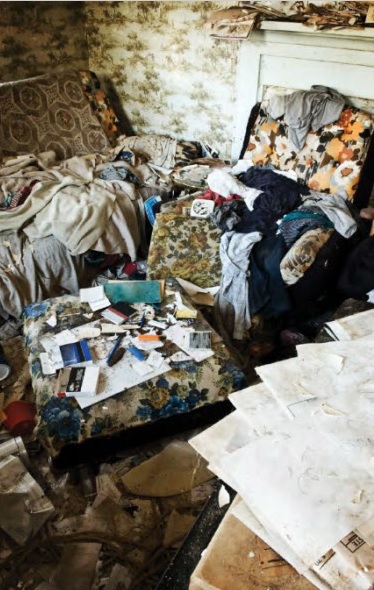
INCLEAN’s Keith Watts spoke to several cleaning professionals who offer hoarding clean-up services about the process and what it takes to achieve successful outcomes in this extremely sensitive area.
Hoarding is a recognised psychological disorder, understood to affect around 600,000 Australians, and for those tasked with the clean-up the job requires empathy, understanding and care.
According to Belinda Anderson, mental health practitioner and 2IC at STC Services, demand for hoarding clean-up services is on the rise for the Victorian business.
“With shop at home services and online shopping on the incline and also the lack of mental health services available the demand is ever increasing and has created rapid growth for STC,” Anderson said.
“We have just put on two new vehicles and now have a total of five out on the road sometimes seven days a week helping clients restore their homes to what they once were.”
Michael Pinto, CEO of US-based Wonder Makers Environmental and who was recently in Australia to conduct a hoarding workshop at Jena Dyco, says hoarding is now recognised by the medical community as a psychological disorder.
“[Hoarding] appears to be more prevalent in first world countries as compared to more impoverished areas around the globe. While it has only recently been defined and studied as an illness, mostly in the last 20 years, it has been recognised as a problem for nearly a millennium,” he said.
A specialist skillset
Pinto says hoarder cases require a combination of skills including content management, disposal services, disinfecting, cleaning and mould remediation. Putting all these together to address a hoarder situation can be tricky.
“The actual work involves individuals who can tolerate wearing personal protective equipment for extended periods of time. They need to be physically fit and also have an eye for detail so that they don’t miss any jewellery, cash, collectibles and other valuables that might be buried in the pile.
“Generally speaking, it is cleaning and restoration contractors who are best suited to handle hoarding situations. They not only have the ability and the heart to complete the projects properly, but they are also used to dealing with individuals who are suffering through some of the most devastating situations of their lives.”
Darren Holman, business manager of Kleenit’s hoarder cleaning division in Victoria, told INCLEAN magazine, as he developed his business he became aware of the greater need for hoarding cleaning services.
“There is a lot of it out there” Holman said. “Mostly it’s the family who notify me and sometimes the council steps in with a health warning and advises the family to take action. I like to get the family involved as much as possible.”
Holman, who does regular work for the Frankston Council, Citi Power, the Department of Housing together with squatter clean ups and domestic work, says while the syndrome is a mental illness, he believes it is treatable.
“I try to reason with them, organise things and try to explain that I am not trying to take things away from them and wreck their life but I am trying to make their property safe to live in,” he explains.
“We are not psychologists but my main message is to show empathy, understanding and care. Quite often it is elderly people and it is a very sensitive area. If possible it is good to get them into a council program. The most common thing I find is that people are embarrassed by it and don’t want people coming into their house.”
Continue reading the full article in the September/October issue of INCLEAN magazine.